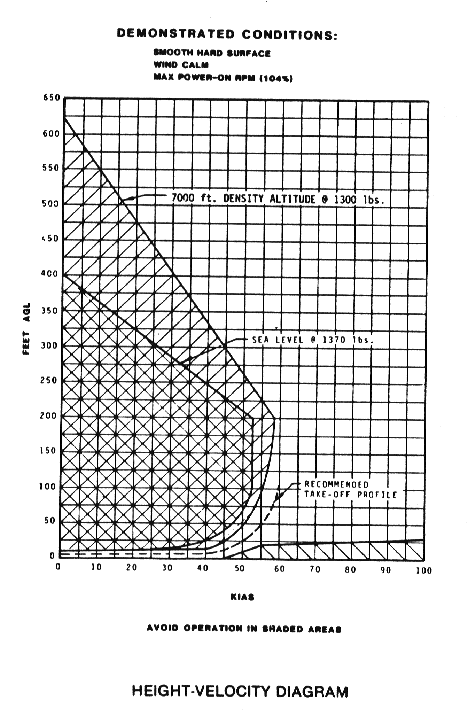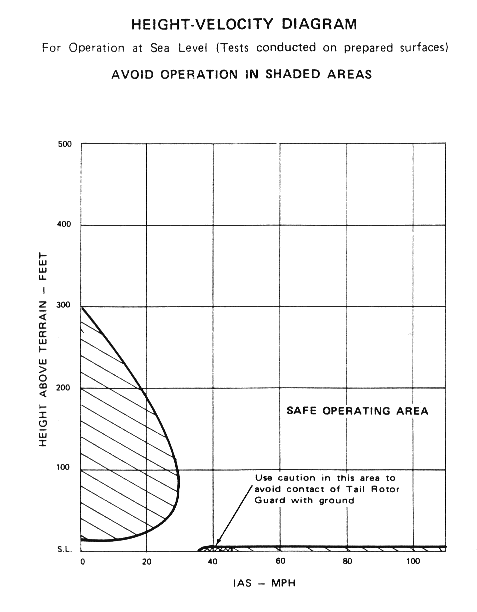Alright flyguy... we'll make you a helo guy yet... now look at the chart. The numbers to the right are indicated airspeed. The numbers going up are altitude AGL. Got it? Good... now forget the chart for a second.
What is an autorotation? In the most simple terms, it is the equivilent of an airplane gliding with out power. But in order for a helicopter to glide, its wings (rotor blades) have to be spinning. How do you make them spin without engine power?? Air has to pass through them from below... and that part isn't difficult since you'll be going down towards the earth once your engine fails anyway.
Another thing to get those rotors spinning on their own is to remove all the pitch from the blades. Imagine the blades pitched (angled) into the wind... this creates lift when power is applied because each pitched blade is like a mini airplane wing in a climb attitude. But when no power is applied, imagine all that surface area trying to bite through the air. It's not going to happen. Eventually (quickly actually) the rotor blades will slow down to a point where they're incapable of lift and you will tumble from the sky. But at flat pitch, the blades meet the least amount of resistance and can spin freely.
So, once your engine fails and you successfully reduce the pitch of the rotor blades (by quickly reducing collective) your next step (besides looking for a place to land) is to get to your best glide airspeed (like an airplane!)
But helicopters can hover and fly verrrrry slowly, so unlike planes where you'd usually slow down to reach best glide, in a helicopter you might have to speed up. How? Only one way - pitch the nose down and rapidly trade altitude for airspeed. Now back to the charts. Look at the left side of each chart. Its telling you that going slow at low altitudes is hazaardous for your health. You won't be able to build up airspeed fast enough before you smack into the ground.
Okay, the right side of the chart is the fast and low chart (Or as I like to call it, the Army side.:bandit: ) This one is pretty simple: upon an engine failure you might not have enough reaction time to lower the collective and enter an autorotative profile before the helicopter hits the ground.
Whew! And that's my typing quota for the day! Hope that explains it better. That will be $35.

Disclaimer: For the helo guys I am just ignoring hovering autos with this explanation.






